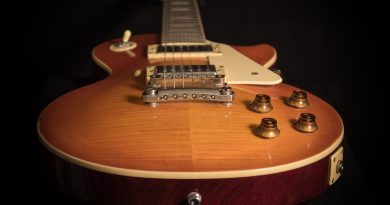Master Guitar Chords by Ear with This Comprehensive Guide
Master Guitar Chords by Ear with This Comprehensive Guide
Learning how to play the guitar by ear is a valuable skill that every guitarist should strive to develop. Being able to listen to a song and figure out the chords and progressions by ear not only improves your overall musicianship but also opens up a world of musical possibilities. In this comprehensive guide, we will explore the fundamentals of playing guitar chords by ear and provide you with the tools and techniques to master this essential skill.
Understanding Basic Music Theory
Before diving into learning guitar chords by ear, it is crucial to have a solid understanding of basic music theory. Familiarize yourself with common musical terms such as scales, intervals, and chord progressions. Learn to identify the different types of chords – major, minor, augmented, and diminished – and their respective sound qualities. This foundational knowledge will serve as a roadmap as you navigate the world of guitar chords by ear.
Developing Your Ear
One of the key elements to mastering guitar chords by ear is developing your ear. Training your ear to recognize pitch, intervals, and chord progressions is essential for accurately identifying chords in songs. Practice ear training exercises such as playing intervals on the guitar and trying to replicate them by ear. Listen to songs and try to pick out the chords and progressions used in the music. The more you train your ear, the better equipped you will be to play guitar chords by ear.
Identifying Root Notes
When learning to play guitar chords by ear, it is crucial to start by identifying the root note of the chord. The root note is the foundation of the chord and serves as a reference point for building the rest of the chord structure. Practice playing single notes on the guitar and listening for the root note in songs. You can also use a piano or keyboard to help you identify the root note of a chord by playing the chord and matching the notes on the guitar.
Building Chords from Root Notes
Once you have identified the root note of a chord, you can begin to build the chord structure around it. Start by adding the third and fifth notes of the scale to create a basic triad chord. Experiment with different voicings and inversions to find the most accurate representation of the chord. As you practice building chords from root notes, you will become more adept at playing guitar chords by ear.
Learning Common Chord Progressions
Understanding common chord progressions is essential for playing guitar chords by ear. Familiarize yourself with popular chord progressions such as the I-IV-V progression or the ii-V-I progression. Practice playing these progressions in different keys and contexts to develop your ear for chord changes. By mastering common chord progressions, you will be better equipped to identify chord progressions in songs and play them by ear.
Transcribing Songs
One of the best ways to practice playing guitar chords by ear is to transcribe songs. Choose a song that you enjoy and listen to it carefully, paying attention to the chords and progressions used in the music. Try to figure out the chords by ear and play along with the song. Transcribing songs is a valuable exercise that will improve your ear training and chord recognition skills.
Utilizing Technology
In addition to practicing playing guitar chords by ear, you can also utilize technology to assist you in your learning. There are numerous apps and software programs available that can help you identify chords in songs and provide you with chord charts and progressions. Use these tools in conjunction with practicing playing by ear to enhance your skills and deepen your understanding of guitar chords.
Developing Your Personal Style
As you progress in your journey to master guitar chords by ear, it is important to develop your personal style and approach to playing. Experiment with different chord voicings, embellishments, and techniques to create your unique sound. Incorporate elements of your favorite artists and genres into your playing to expand your musical vocabulary and express your creativity. By developing your personal style, you will not only become a better guitarist but also a more versatile and expressive musician.
Conclusion
Learning to play guitar chords by ear is a valuable skill that every guitarist should strive to develop. By understanding basic music theory, developing your ear, and practicing playing by ear, you can master the art of identifying chords and progressions in songs. Utilize technology and transcribe songs to enhance your learning and deepen your understanding of guitar chords. Remember to develop your personal style and approach to playing to create a unique sound that reflects your creativity and musicality. With dedication, practice, and perseverance, you can master guitar chords by ear and unlock a world of musical possibilities.






